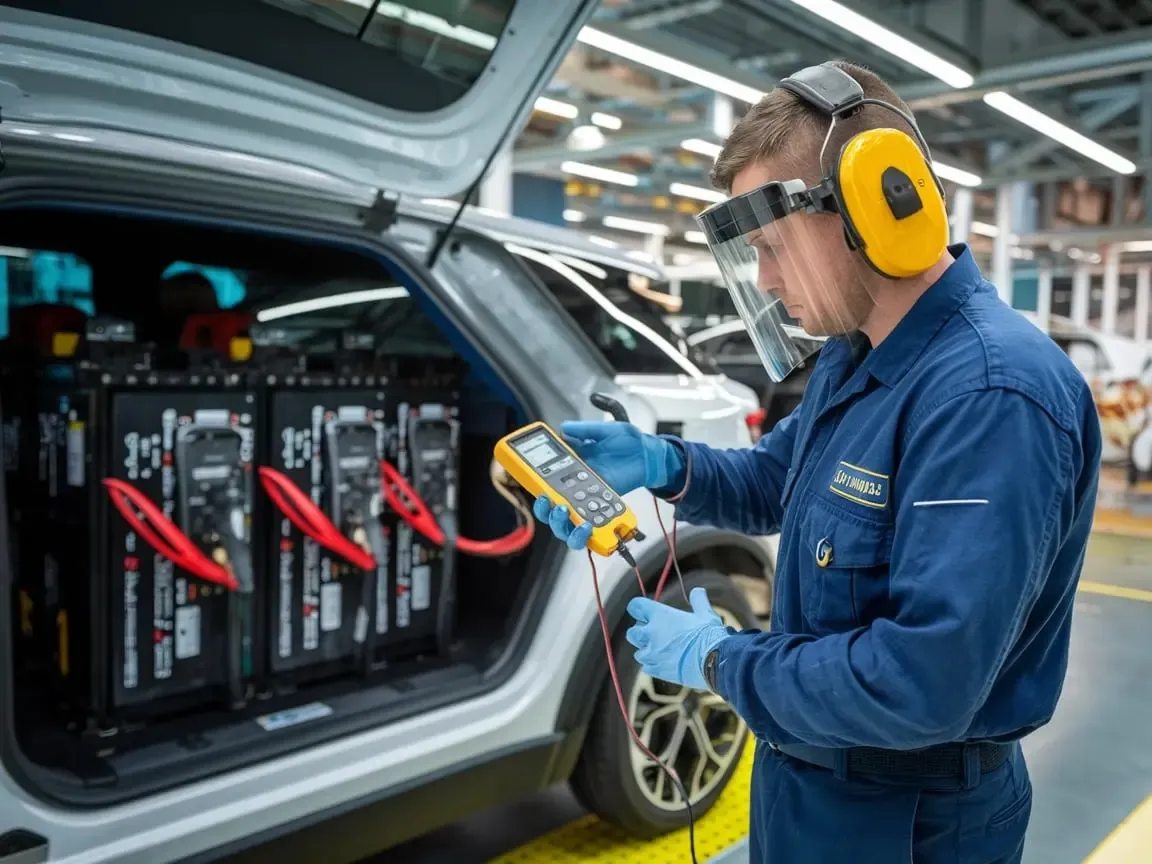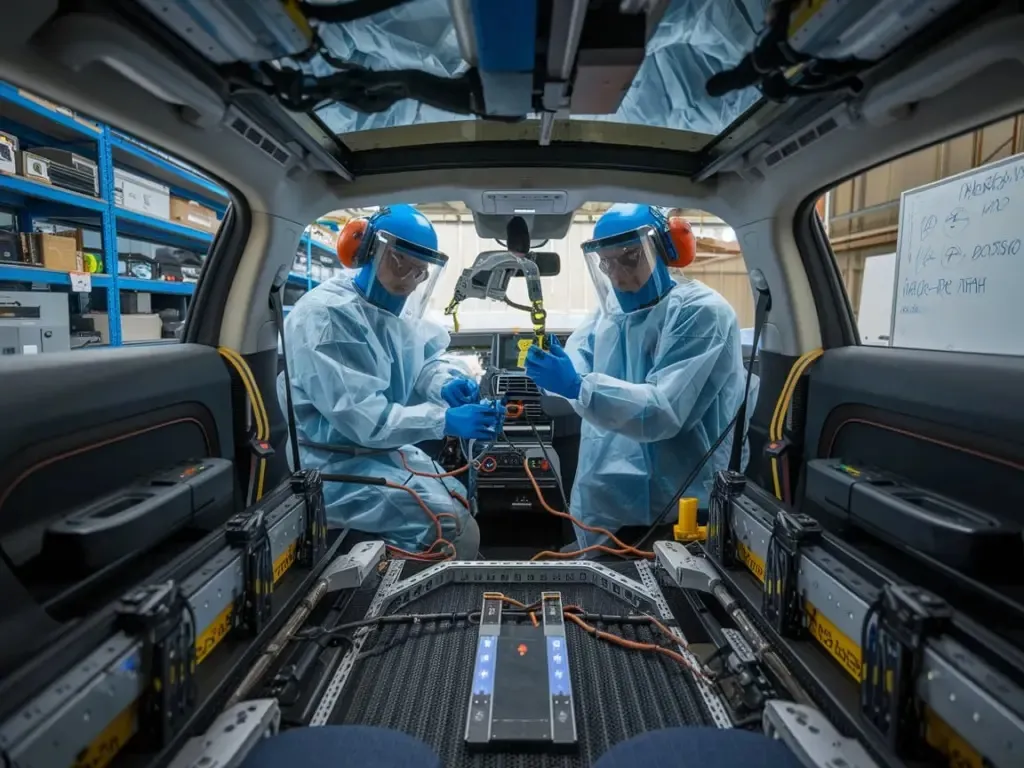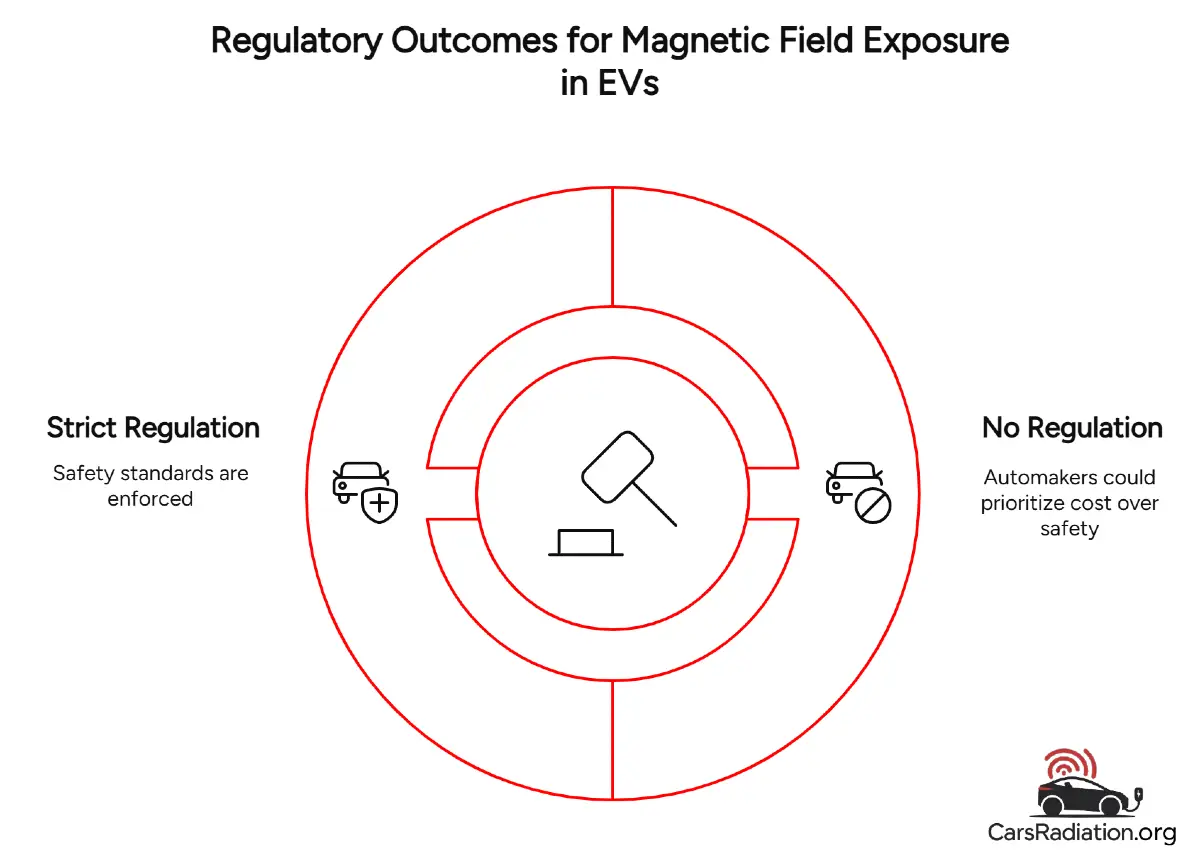Do Car Manufacturers Have to Follow Magnetic Field Exposure Standards?

As electric and hybrid cars become more common, they bring both improvements and new challenges. These vehicles are better for fuel efficiency and reducing pollution, but they also rely on powerful electrical parts. This creates another issue: low-frequency magnetic fields forming inside the car where people sit.
That leads to an important question: do carmakers have to follow any official safety limits for how much magnetic field people inside the car are exposed to?
Are There Set Rules for Magnetic Field Exposure in Cars?
Right now, there are no global laws that require carmakers to limit magnetic field exposure inside vehicles. There are general safety guidelines for the public (from groups like ICNIRP and IEEE), but they don’t specifically apply to cars. Because of that, carmakers aren’t forced by law to design vehicles with lower magnetic field levels.
However, this lack of rules may not last much longer.
A technical report from the European Commission’s Joint Research Centre (JRC) recommended creating clear standards for how to measure and limit magnetic field exposure inside cars. The main reason is safety: without set limits, carmakers might not focus on reducing magnetic fields, especially if it makes the car more expensive or harder to build.
Why Having Standards Is Important
 If we had standard ways to measure magnetic field exposure, it wouldn’t just help with making rules. It would also give people useful information. Just like nutrition labels on food, a magnetic field score for each car could help buyers compare models and push carmakers to design vehicles that reduce exposure where people sit.
If we had standard ways to measure magnetic field exposure, it wouldn’t just help with making rules. It would also give people useful information. Just like nutrition labels on food, a magnetic field score for each car could help buyers compare models and push carmakers to design vehicles that reduce exposure where people sit.
These standards would also make it easier to test cars in a consistent way, compare safety ratings, and let outside organizations verify results.
Some steps in this direction are already happening. For example, the IEC 62764 standards are being developed to explain how to measure magnetic fields inside cars. China’s NCAP program has already added magnetic field exposure into its safety and environmental rating system for vehicles.
Why Should You Care?
There’s growing concern about how electromagnetic fields (EMFs) might affect our health, especially the ones that come from electric systems inside cars. These fields, known as extremely low-frequency (ELF) magnetic fields, are found in electric and hybrid vehicles. The World Health Organization (WHO) has said these types of fields are possibly carcinogenic to humans. This doesn’t mean they definitely cause cancer, but it’s enough for experts to suggest we should be careful.
Right now, there are no worldwide rules that limit how much of this radiation is safe for people. Still, some countries are starting to set their own safety guidelines. For example, China has a system called Green NCAP that gives safety grades based on how much EMF is present in a car.
As carmakers add more high-voltage parts to new vehicles, people inside the car end up sitting closer to these components. That means exposure to EMF can’t be ignored. It has to be taken seriously and included in the early stages of car design. It shouldn’t be something engineers fix later. It should be part of how the car is planned and built from the start.

What You Can Do Right Now
Even though there are no official safety rules yet, there are steps you can take to lower your exposure to magnetic fields in cars:
- Sit farther from the battery and motor if you can. The closer you are to these parts, the higher the exposure. If you can get your car measured for EMF by a professional, avoid placing children where EMF levels typically rise beyond 0.4 microTesla (4 milli Gauss)
- Don’t stay inside the car while it’s charging. Charging can sometimes create stronger magnetic fields.
Consider installing EMF reduction device Companies like SafeFields make products that can help reduce your exposure without needing to change anything in your car.
What’s Next? A Call for More Awareness
Just because there are no official rules yet doesn’t mean everything is safe. It’s up to car makers and government agencies to set clear limits based on science and to be open about how much electromagnetic radiation is in their vehicles.
At the same time, everyday people have an important part too. If more consumers ask questions and request information about EMF levels, car companies may start taking the issue more seriously.
Until proper rules are in place, the best way is to reduce your exposure when you can and use available protection tools.

